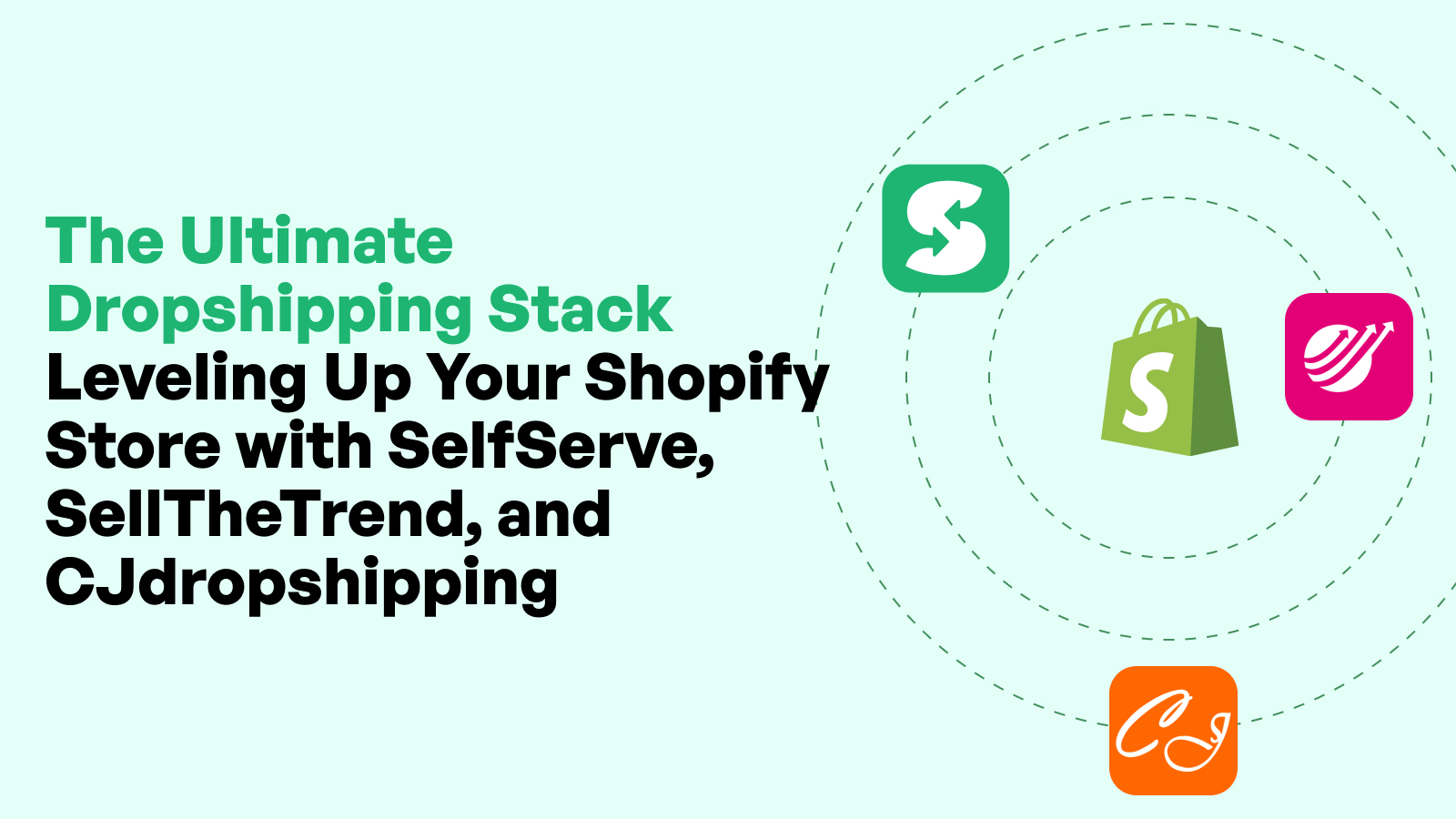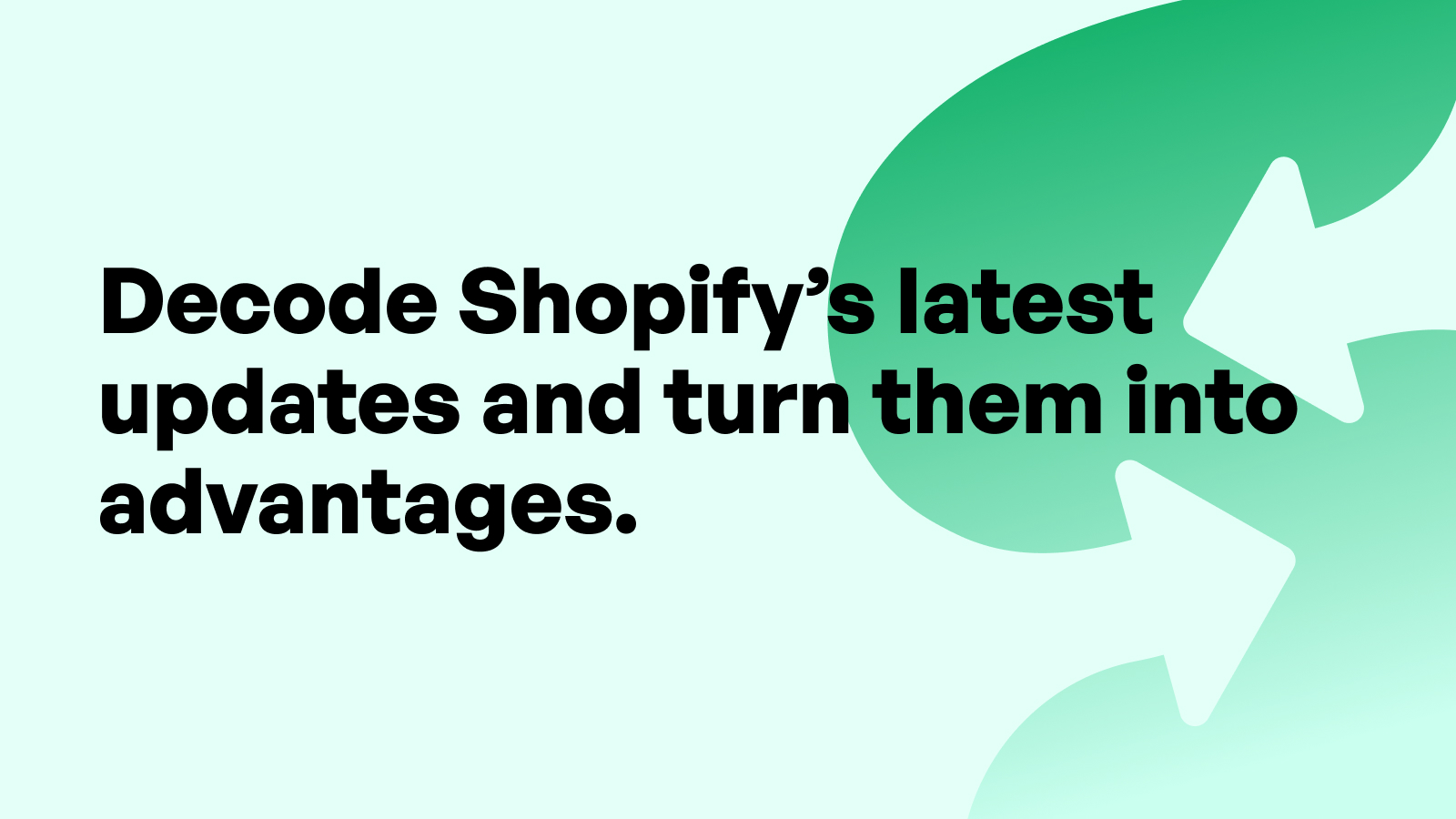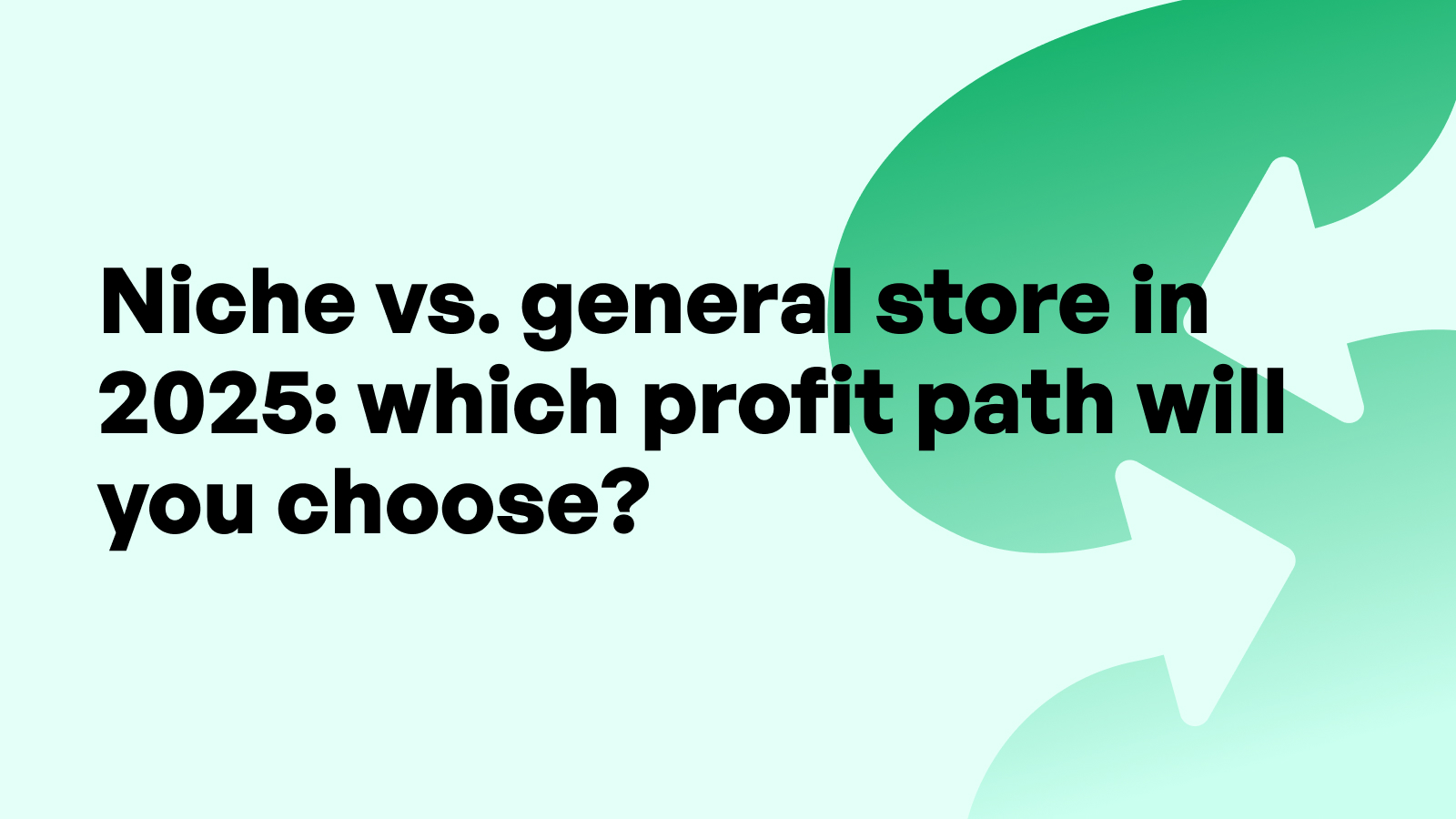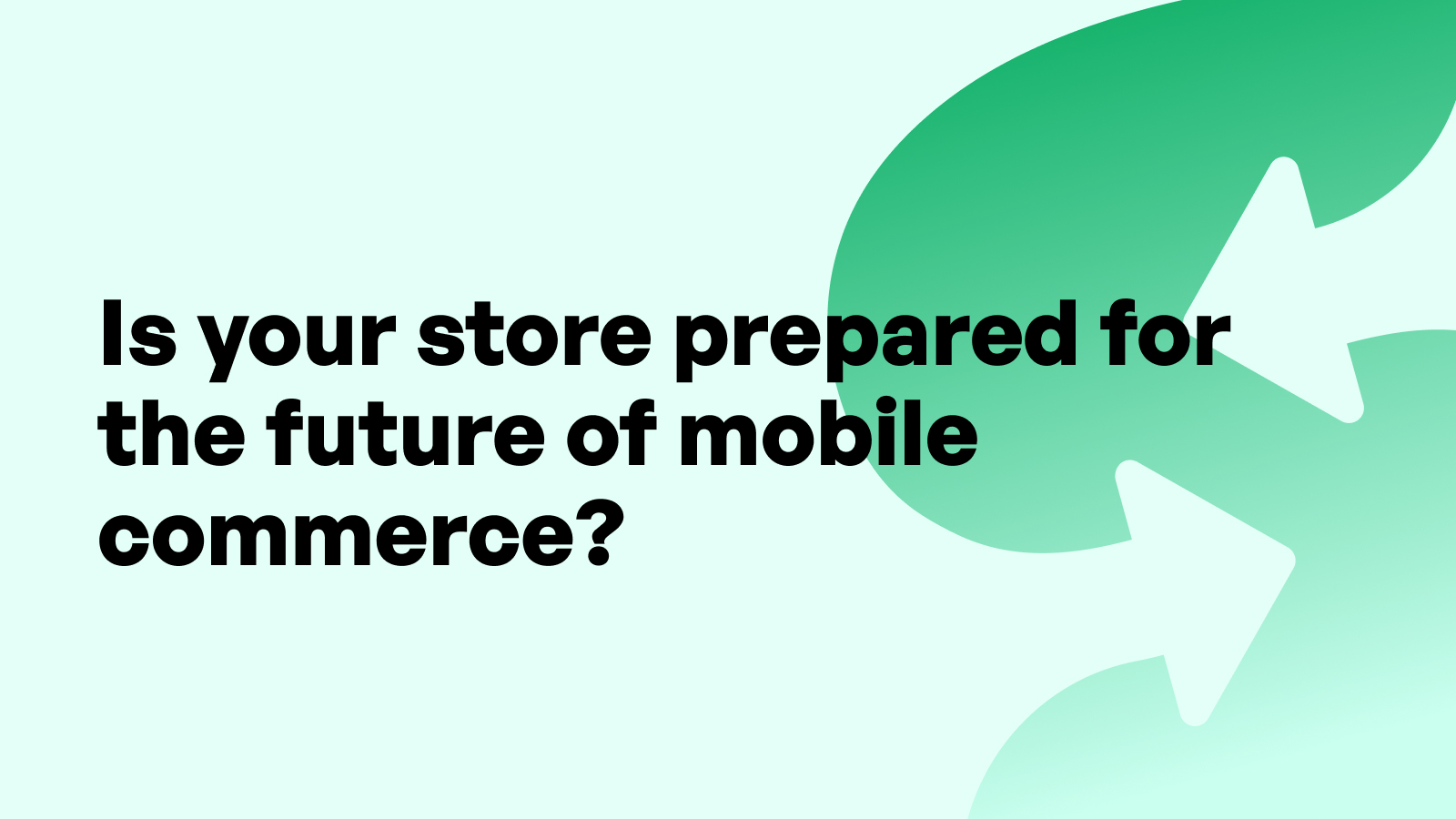10 Proven Ways to Increase Your Shopify Store’s Average Order Value (AOV)

Understanding Average Order Value (AOV)
What is AOV and Why It Matters
For Shopify merchants, Average Order Value (AOV) represents the average amount spent each time a customer places an order. It’s calculated by dividing total revenue by the number of orders within a given period. Unlike sales volume, AOV reflects how much value each transaction brings to the business. A high AOV means more revenue per customer, leading to higher profit margins without increasing acquisition costs.
AOV becomes even more powerful when combined with consistent traffic and a stable conversion rate. Rather than focusing solely on driving more traffic, Shopify merchants who prioritize AOV can drive profitability by maximizing what each customer already intends to spend. It’s one of the most efficient ways to grow revenue.
The Financial Impact of a Higher AOV
Let’s consider a Shopify store that averages $60 per order. By increasing AOV to $75, with no increase in traffic or conversion, that store gains a 25% revenue boost. This extra income can be reinvested into better marketing, customer service, or product development. A higher AOV also improves the efficiency of advertising spend, reducing your cost-per-sale relative to revenue earned.
The beauty of optimizing AOV is that it builds scalability into your existing funnel. Shopify merchants can earn more from the same customer base, creating a strong foundation for long-term growth. In times of inflation or rising ad costs, increasing AOV is a defensive strategy that improves financial resilience.
AOV vs Customer Lifetime Value: Key Differences
While both metrics are crucial, AOV focuses on individual transaction value, while Customer Lifetime Value (CLTV) measures the total revenue a customer generates throughout their relationship with your brand. AOV is easier to influence in the short term—often with tactical changes to product presentation, pricing, or checkout strategy—whereas CLTV reflects broader brand loyalty.
Understanding both metrics allows Shopify merchants to balance short-term cash flow with long-term brand building. Focusing on AOV does not mean ignoring repeat purchases—in fact, the two metrics often rise in tandem when customers have great buying experiences.
Analyzing Your Current AOV Performance
How to Calculate AOV in Shopify
Shopify merchants can calculate AOV by dividing total revenue by total number of orders over a set time frame. For example, if your Shopify dashboard shows $30,000 in revenue from 500 orders in a month, your AOV is $60.
This data is easily accessible from the Shopify admin under Analytics > Reports > Sales by Day or Sales by Order. Use custom timeframes to observe how AOV fluctuates during promotions, holidays, or seasonal changes. This helps identify patterns and inform future AOV-focused campaigns.
Accurate AOV tracking allows merchants to assess the effectiveness of upsell campaigns, free shipping thresholds, or bundling strategies. It’s the most critical metric to monitor when implementing the strategies outlined in this guide.
Tools and Reports for AOV Tracking
Beyond the Shopify Analytics dashboard, Shopify merchants can use deeper insights available in the “Finances Summary” and “Order Insights” sections. Filtering by product type or sales channel can highlight which SKUs or regions contribute most to AOV.
To compare AOV over time, create custom reports that track weekly or monthly averages. Use cohort analysis to evaluate how AOV behaves for new vs. repeat customers. These insights can drive more refined marketing and pricing strategies.
Consider setting AOV benchmarks per product category. For example, high-ticket items may naturally produce a higher AOV, but low-margin categories might need bundling or cross-sell tactics to pull their weight.
Common Reasons for Low AOV
If your Shopify store’s AOV is underperforming, common culprits may include poor product discovery, a lack of complementary items, unclear value propositions, or pricing that discourages add-on purchases. Customers may also feel friction at checkout or fail to see value in larger orders.
Improving AOV often starts with better product presentation and navigation. Make sure product recommendations are personalized, and your site clearly communicates the benefits of purchasing more. Shopify merchants should also analyze their cart abandonment data to identify where high-value orders are being lost.
Addressing these foundational gaps will increase the effectiveness of the strategies that follow. With a strong baseline, every upsell or offer has a higher chance of success.
1. Product Bundling Strategies
Creating Effective Product Bundles
Bundling involves grouping complementary products into a single offer, often with a slight discount. This tactic not only increases AOV but also improves the perceived value of the purchase. Shopify merchants should identify natural product pairings—such as accessories with a primary item, or starter kits that introduce multiple products together.
Bundles should solve a specific problem or fulfill a clear theme. For example, a skincare merchant might create a “Daily Essentials Kit” that includes cleanser, toner, and moisturizer. By bundling, you guide the customer toward a complete solution, increasing satisfaction and average order size.
Merchants must be careful to not overcomplicate bundles. Too many options can lead to decision fatigue, whereas curated, easy-to-understand bundles often convert better. Highlight the value proposition clearly on the product page, using side-by-side pricing comparisons to emphasize savings.
Shopify Settings for Bundle Discounts
Shopify merchants can set up bundles by using variants, custom collections, or manual discount codes. For simple bundles, a product page can be customized to include several items listed as variants, allowing customers to add all to cart in one click.
For larger stores, using Shopify’s built-in discount engine helps automate pricing for bundles. Set “Buy X, Get Y” or “Spend $X, Save $Y” offers that reflect your bundle structure. Use cart scripts or custom line-item logic to display bundle savings directly in the cart.
Consistency across mobile and desktop layouts is key. Bundled products should look visually cohesive and reinforce the idea that the customer is getting more for their money. Regular A/B testing of bundle formats and product pairings can help refine performance.
Measuring Bundle Performance and Optimization
Track bundle performance by comparing AOV before and after implementation. Shopify reports like “Sales by Product Variant SKU” can help isolate which bundles perform best. Use UTMs or tags for each bundle campaign to track its impact on traffic and conversions.
Refine bundles based on seasonality or customer feedback. Survey your buyers post-purchase to understand whether bundles met their expectations. Successful bundles often evolve based on demand shifts, inventory levels, and top-selling categories.
If bundles reduce returns or increase satisfaction, they can also positively influence long-term metrics like CLTV. Treat bundling not just as a pricing tactic, but as a merchandising opportunity to elevate the entire shopping experience.
2. Upselling at Product and Cart Level
Smart Upsell Tactics That Don’t Annoy Customers
Upselling is the practice of encouraging customers to purchase a higher-end version of the product they’re already considering. For Shopify merchants, the key to successful upselling lies in subtlety and timing. Rather than interrupting the customer’s experience, upsell suggestions should feel like helpful guidance.
For instance, if a customer adds a basic backpack to their cart, you might suggest a deluxe version with waterproof features and additional compartments. This type of upgrade benefits the customer while also increasing the order value.
Avoid being pushy or aggressive—customers are wary of tactics that feel manipulative. Present upsell options with language that highlights benefits rather than pressure. Phrases like “Most customers prefer” or “Get more for less” can nudge decisions without creating resistance.
Where to Place Upsell Offers in Shopify
The best placements for upsell offers are on the product page, in-cart, or just before checkout. Shopify merchants can use dynamic sections on product pages to showcase alternative versions of the item or premium add-ons.
At the cart level, Shopify allows scripts that suggest an upgraded product based on cart contents. Make sure this doesn’t interfere with the buyer’s progress—clarity and speed should remain the top priorities.
Post-purchase upsells can also be effective. After the transaction is complete, offer an upgrade or complementary item at a slight discount. This maintains the customer’s momentum and adds to AOV without jeopardizing the original conversion.
Realistic Expectations for Upsell Conversion Rates
Upsell conversion rates vary depending on the product, pricing, and placement. On average, 5–10% of users may accept an upsell offer if it’s relevant and well-timed. Even a modest success rate can meaningfully lift AOV, especially at scale.
Track upsell performance using Shopify reports that segment orders with and without upsell purchases. Analyze metrics like time on page, cart abandonment, and repeat purchase behavior for customers who engaged with upsell offers. These insights help refine future placements and messaging.
When executed thoughtfully, upselling becomes a win-win for both merchant and customer—it provides better value and increases profit without eroding brand trust.
3. Cross-Selling Techniques That Drive Results
Cross-Selling vs Upselling: What’s the Difference?
While upselling focuses on selling a more expensive version of the item a shopper is considering, cross-selling introduces related or complementary products. Shopify merchants can leverage cross-selling to increase AOV by suggesting additional items that enhance the primary purchase. For example, if someone buys a camera, cross-selling might offer a memory card, tripod, or camera bag.
Cross-sells are often easier to implement because they don’t require the shopper to abandon their original choice. Instead, they enhance the cart organically. This strategy works best when the customer is already committed to buying something and is open to relevant, helpful suggestions.
Best Locations for Cross-Sell Offers
The most common and effective locations for cross-selling include product pages, cart pages, and the post-purchase thank-you page. On the product page, suggest “Customers also bought” items. In-cart cross-sells can remind customers of items they may have forgotten.
Shopify merchants should tailor suggestions based on product category and customer history when possible. Personalized cross-sells, based on prior behavior or common bundles, convert at higher rates. On the post-purchase page, cross-sells should be low-risk add-ons that encourage customers to return and buy again.
Cross-sells on mobile should remain visually simple to avoid slowing down the buyer’s progress. A quick-add button and clear value explanation are essential.
Measuring Cross-Sell Effectiveness
Track the impact of cross-sells by measuring click-through rates, conversion rates, and added revenue. A successful cross-sell increases AOV without increasing returns or cancellations. Shopify’s order tagging system and sales by SKU report can help isolate which cross-sells are contributing.
Merchants should test different types of cross-sells—accessories, subscriptions, warranties—to see what aligns with customer interests. Be careful not to introduce decision fatigue. Offer one to two relevant options and maintain a cohesive customer journey.
4. Volume Discounts and Tiered Pricing
Designing Tiered Pricing That Motivates Larger Orders
Volume discounts incentivize customers to spend more by reducing the unit cost as order size increases. For example, “Buy 2, save 10%; buy 3, save 15%.” Shopify merchants can use this strategy to increase AOV while moving more inventory.
The key is transparency. Make sure tiered discounts are clearly displayed on the product page and updated dynamically as quantity increases. Use concise, benefit-focused messaging like “More = Save More” or “Stock Up and Save.”
Tiered pricing works well for consumables, accessories, and seasonal items. Positioning these discounts as limited-time or tied to a seasonal campaign can further motivate buyers to act.
Implementing Volume Discounts in Shopify
Shopify allows merchants to create automated discounts with tiered logic through its native discount settings. Merchants can specify the quantity ranges and percentage off for each tier. Display the resulting total savings in the cart and during checkout to reinforce the incentive.
Ensure discount logic does not conflict with other offers, such as free shipping thresholds. Tiered discounts and free shipping work well together when planned carefully.
A/B test different thresholds—e.g., 2 items vs 3 items—and track conversion rates. What works for one product category might not apply to another.
Balancing Profit Margins with AOV Growth
The goal of tiered pricing is to increase revenue, not just units sold. Shopify merchants must calculate the margin impact of each discount tier. If a discount reduces margin too much, it may undermine the goal of profitably increasing AOV.
Focus on increasing basket size while protecting per-unit profitability. Higher volume should compensate for lower margins. Use average margin benchmarks to decide where your tiers make financial sense.
Smart use of tiered pricing can help clear overstock, boost CLTV, and reward customers for buying more—all while driving higher order values.
5. Free Shipping Threshold Optimization
Why Free Shipping Drives Higher Order Values
Free shipping remains one of the most compelling incentives in eCommerce. When Shopify merchants set a minimum threshold for free shipping, it nudges customers to add more to their carts. The key is setting a threshold just above your current AOV to encourage larger orders.
For example, if your current AOV is $55, setting a free shipping threshold at $75 can increase overall cart size. Many customers would rather spend more on products than pay for shipping.
Calculating the Right Threshold for Your Store
To determine the ideal threshold, analyze order data and margin structures. Factor in average shipping costs and profitability. Aim for a threshold that covers fulfillment costs while still improving AOV.
Shopify merchants can also segment thresholds based on location, product type, or customer status (e.g., VIPs get free shipping at a lower tier). Be transparent about the threshold on product and cart pages to guide purchasing decisions.
Clear messaging such as “You’re $15 away from free shipping!” adds urgency and visibility. It turns shipping costs into a motivator instead of a barrier.
Combining Free Shipping with Other AOV Tactics
Free shipping works exceptionally well when layered with other AOV strategies like bundling or volume discounts. For example, a “Buy 3 and Get Free Shipping” offer combines urgency, savings, and convenience.
Shopify merchants should test how threshold-based offers perform during holidays vs regular months. Often, pairing shipping incentives with seasonal bundles can drive the highest results.
Monitor changes in profit margins and fulfillment costs as AOV rises. Ensure the added revenue from upsells or cross-sells offsets the shipping subsidy. This balance makes free shipping a strategic investment rather than an expense.
6. Loyalty and VIP Programs
How Loyalty Programs Encourage Bigger Orders
Loyalty programs are a powerful way for Shopify merchants to incentivize larger purchases. When customers know they’ll earn points or rewards for every dollar spent, they’re more inclined to increase their order value. The key is creating a transparent, easy-to-understand rewards structure that provides value proportional to customer effort.
Point-based programs can offer tiers or milestones, such as free gifts or exclusive access when a customer reaches a specific spending threshold. This turns every transaction into a stepping stone toward a more valuable outcome, increasing both AOV and retention.
Shopify merchants should clearly communicate the benefits of their loyalty programs on product, cart, and checkout pages. Real-time point tracking during the shopping experience can further motivate action.
VIP Tiers and Exclusive Incentives
VIP programs take loyalty a step further by rewarding top spenders with perks like early access to new collections, personalized customer support, or limited-time offers. These programs tap into the psychological power of status and exclusivity, encouraging larger orders to gain or maintain VIP access.
The most successful VIP programs are tailored to customer behavior. For instance, a high-spending customer might be offered an exclusive product bundle unavailable to the general public. This strategy doesn’t rely on discounting, which preserves brand value while increasing AOV.
Shopify merchants can use past order history to qualify customers and trigger automated invitations to VIP status. Personalized offers and recognition (e.g., "Thank you for being a top customer") reinforce emotional loyalty that goes beyond transactions.
7. Subscriptions and Auto-Delivery Options
Why Subscriptions Increase Long-Term AOV
Subscription models are ideal for consumables and replenishable products. Shopify merchants benefit from predictable revenue streams and higher lifetime order values per customer. While AOV is usually measured per transaction, subscription models increase the overall AOV across multiple recurring orders.
When a customer subscribes, they often commit to a higher initial order or a longer-term purchase agreement. Many merchants also include incentives like a bonus item or early delivery for first-time subscribers.
Setting Up Subscriptions for Maximum Value
Subscriptions should be flexible and customer-friendly. Allowing users to modify, skip, or cancel their delivery builds trust and lowers friction. Shopify merchants should clearly highlight the value proposition—whether it’s convenience, savings, or product exclusivity.
Subscription upsells are a smart way to increase AOV. For example, offering a "subscribe and save" model with a larger quantity pack can encourage customers to commit to bigger purchases.
Ensure that subscription pricing doesn’t cannibalize single-order profitability. Proper tiering and cross-selling during signup can prevent this.
Cross-Selling Within Subscription Models
Existing subscribers represent a captive, high-intent audience. Shopify merchants can boost AOV by introducing add-on products at the point of renewal or just before the shipment is processed.
For instance, a skincare subscription might prompt users to include a new serum at a member-exclusive price. These strategic prompts take advantage of a positive customer relationship and often convert at higher rates.
8. Optimizing Checkout and UX for Higher AOV
Simplifying Checkout to Encourage Additional Purchases
A seamless, distraction-free checkout process can significantly increase AOV. If the user encounters slow loading times, unnecessary fields, or confusing layouts, they’re less likely to add more items. Shopify merchants should streamline checkout steps, reduce required form fields, and offer one-click options where possible.
One overlooked tactic is to present final upsell options after the cart summary but before payment submission. For example, "Add this for 20% off" or "Don’t forget this essential add-on" can be powerful nudges if done subtly and in alignment with the customer’s cart content.
Mobile optimization is also critical. Many Shopify shoppers browse and buy via smartphone, so ensuring responsive design and fast page loads directly supports higher AOV.
Using UX Cues to Reinforce Value
Design elements like progress bars, testimonials, or visual product comparisons help customers feel more confident spending more. For example, a progress bar showing "You’re $12 away from free shipping!" encourages incremental purchases.
Color cues, trust badges, and strategic placement of cross-sell sections also reinforce perceived value and legitimacy. Shopify merchants should test different UX layouts to see what influences shopper behavior most positively.
Even microinteractions—like animations that confirm added items or icons that guide attention—can nudge users to add one more item before checking out.
9. Personalization and Smart Product Recommendations
Leveraging Behavioral Data for Higher AOV
Personalization is one of the most effective tools Shopify merchants can use to increase AOV. By analyzing browsing behavior, purchase history, and location data, merchants can present product suggestions that align with each shopper’s interests.
Personalized recommendations feel curated and relevant, increasing the likelihood of adding more items to the cart. Shopify merchants can offer these suggestions in real-time on the homepage, product detail pages, or at checkout.
Contextual relevance is key. If someone just added a yoga mat, offer them a water bottle or yoga blocks—not generic bestsellers.
Dynamic Product Blocks and Onsite Targeting
Smart product blocks that update based on user behavior are essential for AOV growth. Whether based on "recently viewed," "bought together," or "top-rated," these blocks adapt to the customer journey in a meaningful way.
Shopify merchants should test placement and content type. For example, "Complete Your Look" may work better in fashion stores, while "You Might Also Like" fits general product categories.
Incorporate urgency where relevant. For example, "Only 3 left" or "Limited Edition" can increase cart size when paired with personalized targeting.
10. Limited-Time Offers and Scarcity Tactics
How Scarcity Increases Perceived Value
Scarcity taps into the psychological trigger of FOMO—fear of missing out. Shopify merchants can use this tactic ethically to motivate larger orders without appearing manipulative. Messaging such as "Only today," "Limited quantity," or "Ending soon" drives faster decision-making and encourages adding more to the cart while supplies last.
Use this tactic sparingly and truthfully. Overusing urgency can backfire if customers begin to distrust your messages. For best results, align scarcity with real inventory limits or promotional schedules.
Flash Sales and Timed Upsell Offers
Flash sales—especially ones that are personalized or targeted at high-intent segments—can significantly boost AOV. Shopify merchants can run short-term promotions where bundling or higher-priced SKUs are discounted for a brief window.
Timed upsell offers also perform well. For example, “Add this product in the next 5 minutes to unlock free shipping.” These messages drive immediate action and raise average order totals.
A/B testing urgency-based offers during high-traffic periods like holidays or paydays helps determine optimal timing and language.
Conclusion: Tie It All Together with Smart Strategy
For Shopify merchants, increasing average order value is one of the most sustainable ways to grow profit without overspending on ads or chasing unqualified traffic. By combining strategies like bundling, upselling, cross-selling, personalization, and optimized UX, merchants can influence shopper behavior and maximize each transaction.
One overlooked tactic that ties these strategies together is automation. Our Self Serve Shopify App makes it easier for merchants to streamline checkout experiences, automate upsell prompts, and personalize follow-ups at scale. When your store intelligently adapts to shopper behavior in real time, higher AOV becomes a natural outcome.
Remember, the most successful AOV strategies are customer-centric. Focus on delivering value, relevance, and simplicity—and your customers will reward you with larger, more frequent purchases.
5 Unique SEO FAQs About Shopify AOV
What is considered a good AOV for Shopify merchants?
A good AOV varies by niche, but most Shopify merchants aim for $60–$100. More important is increasing your store’s AOV over time through strategic offers and UX optimization.
Does free shipping always increase AOV?
Yes, when set correctly. Free shipping thresholds that are just above your current AOV often prompt customers to add more items to qualify, effectively raising order value.
How can I increase AOV without offering discounts?
Focus on bundling, cross-selling, loyalty programs, and better product recommendations. These tactics boost perceived value and help increase AOV without relying on price cuts.
Can upsells annoy customers and lower conversions?
Not if they’re relevant and well-timed. Effective upsells add value to the purchase and feel helpful. Shopify merchants should test placements to balance sales and experience.
Should I prioritize AOV or conversion rate?
Both matter, but if your traffic and conversion rates are stable, increasing AOV delivers compounding revenue benefits. Shopify merchants should track both metrics and optimize accordingly.




